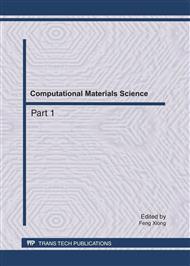p.1061
p.1067
p.1073
p.1077
p.1082
p.1086
p.1092
p.1096
p.1103
A Hybrid Personalized Recommendation Method Based on Dynamic Bayesian Network
Abstract:
With the rapid growth and wide application of electronic commerce, lots of information comes forth to people. However, our experiences and knowledge often do not enough to process the vast amount of information. The problem of obtaining useful information becomes more and more serious. To deal with the problem, the personalized service and recommender system play a more important role in many fields and collaborative filtering is one of the most successful technologies in recommender systems. However, with the tremendous growth in the amount of items and users, most collaborative filtering algorithms suffer from data sparsity which leads to inaccuracy of recommendation. Aiming at the problem of data sparsity, a hybrid personalized recommendation method based on dynamic Bayesian networks is presented. This method uses the dynamic Bayesian network technique to fill the vacant ratings at first, and then employs the user-based collaborative filtering to produce recommendations.
Info:
Periodical:
Pages:
1082-1085
Citation:
Online since:
July 2011
Authors:
Price:
Сopyright:
© 2011 Trans Tech Publications Ltd. All Rights Reserved
Share:
Citation:


